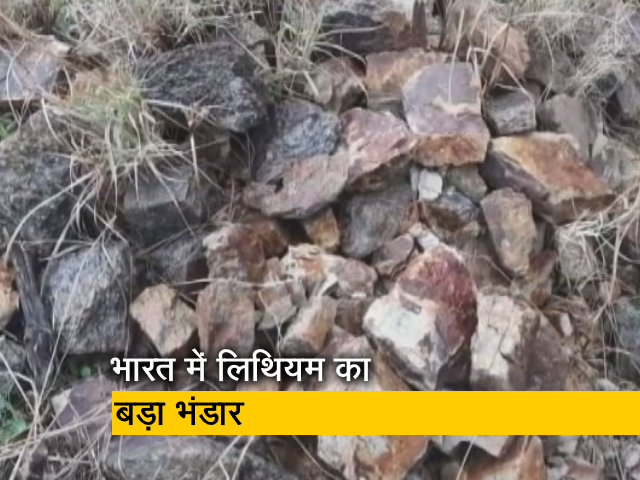Live Classes

A sense of euphoria has engulfed the country – quite understandably – after the Ministry of Mines announced on Friday that the Geological Survey of India has discovered lithium in Kashmir, with inferred reserves of 5.9 million tonnes (mt). Lithium is the primary ingredient for making the most sought-after electrochemical batteries, viz., lithium-ion batteries.
Why is this latest discovery important?
There are other electrochemical batteries blossoming in research laboratories, such as those based on zinc, sodium and iron, and indeed, there are many other ways of storing energy—ranging from flow batteries to pumped storage—but there is no denying that today, lithium is the king.
Lithium is a metal: the lightest metal and the third element in the periodic table, after hydrogen and helium, both of which are gasses. It is highly reactive. If you put a pellet of lithium in water, it will start sizzling like pakora in hot edible oil and could even catch fire. It is extremely light and a good donor of electrons—which makes it the preferred electrode material in batteries. But to make better batteries, lithium is mixed with other elements, such as cobalt, iron, phosphorus or sulphur: but it remains the main stuff in lithium-ion batteries
In 2020-21, ?173 crore worth of lithium metal and ?8,811 crore worth of lithium batteries were imported. In the April – November period of 2022, for which figures are available, the numbers were ?164 crore and ?7,986 crore. In the same period, India also imported ?339 crore worth of lithium hydroxide and ?95 crore of lithium carbonate, both of which doubled over the corresponding period of the previous year. This gives a sense of buoyancy in imports. These numbers will only increase, exponentially, as (according to Niti Aayog) the demand for advanced chemistry cell batteries is set to increase between 104 GWhr and 260 GWhr by 2030, compared with about 3 GWhr now.
The Ministry of Mines has estimated that the reserves could contain 5.9 mt of lithium. To compare, the previous discovery in India, in the Mandya district of Karnataka in 2021, was estimated at 1,600 tons. To put this in perspective, Bolivia has 21 mt, Argentina 17 mt, Chile 9 mt, US 6.8 mt, Australia 6.3 mt, and China 4.5 mt.
However, the 5.9 mt estimate of the Kashmir find is only in the ‘inferred’ category. A lot of work needs to be done before it is established as mineable reserves. The GSI survey was a ‘preliminary survey’ (or, ‘G3’), which is the second step in the exploration of minerals after ‘reconnaissance surveys (G4). After further exploration, the exact reserves will be determined and then will start the process of securing environmental clearances and tendering out for mining. Hopefully, as all this happens, a processing industry will evolve in India.
A highly optimistic estimate would be seven years, but ten years looks feasible. In the meantime, India has to do with imports. Fortunately, under the Indo-Australia FTA, lithium can be imported duty-free.
Lithium-ion battery (or LIB)
Lithium-ion battery usage:
Electronic equipment, tele-communication, aerospace, industrial applications. Lithium-ion battery technology has become the preferred energy source for electric and hybrid electric vehicles.
Drawbacks of Lithium-Ion Battery:
Geological Survey of India